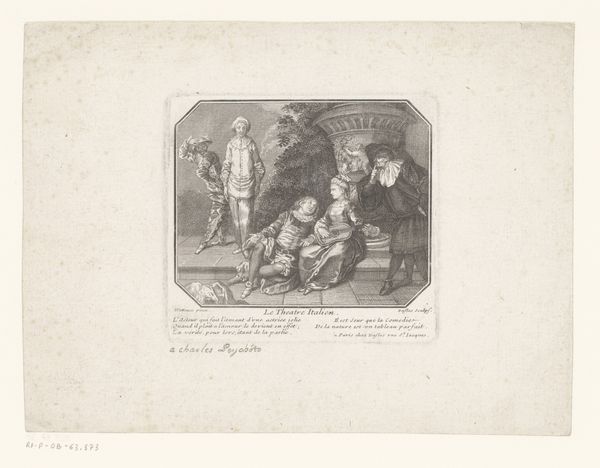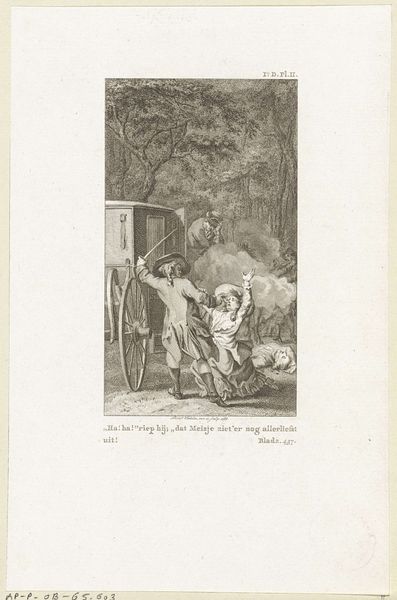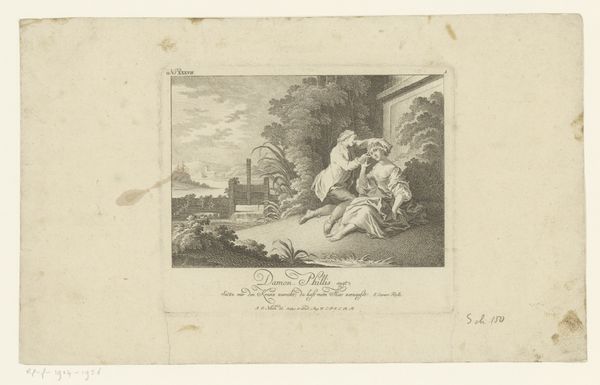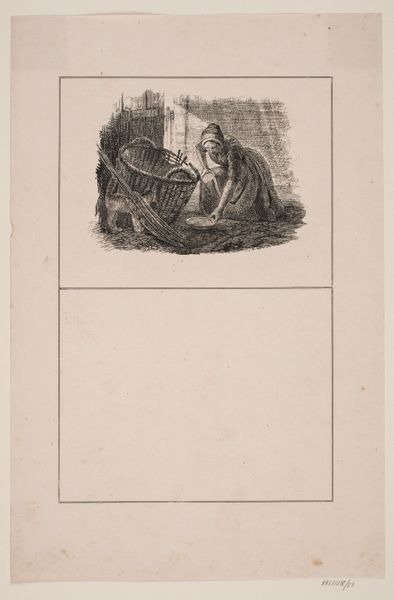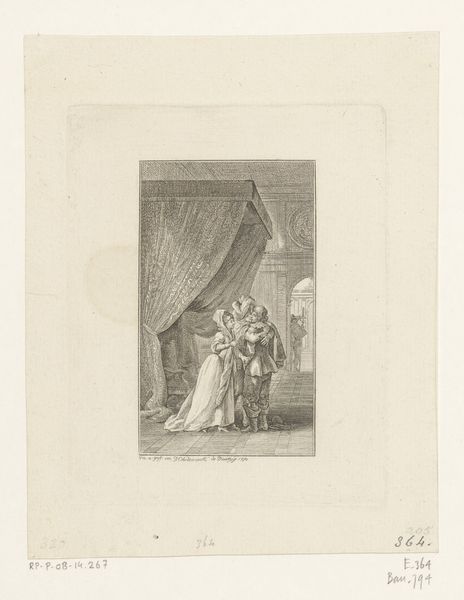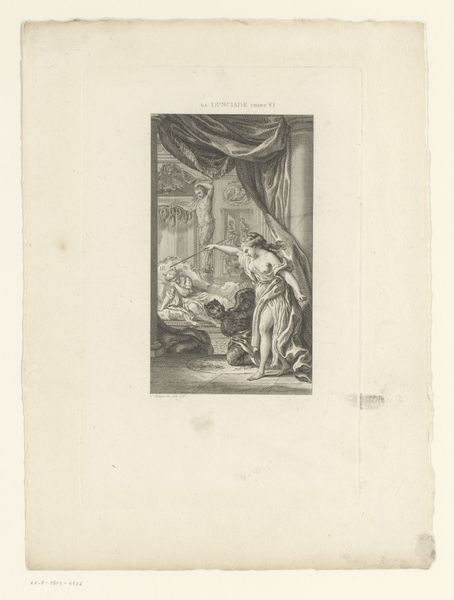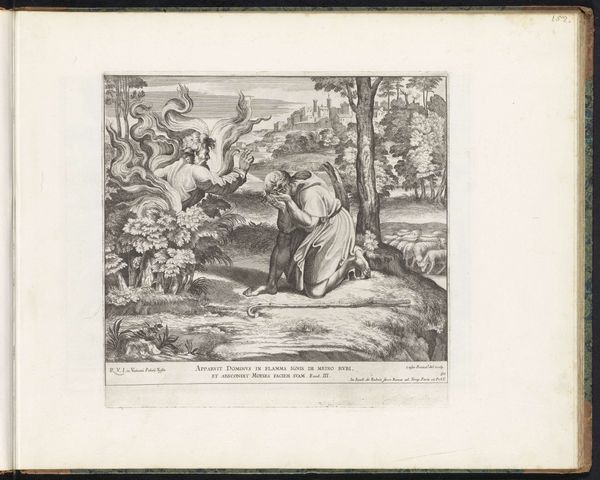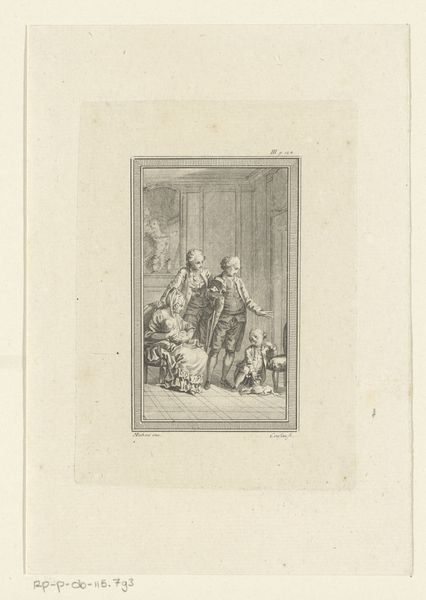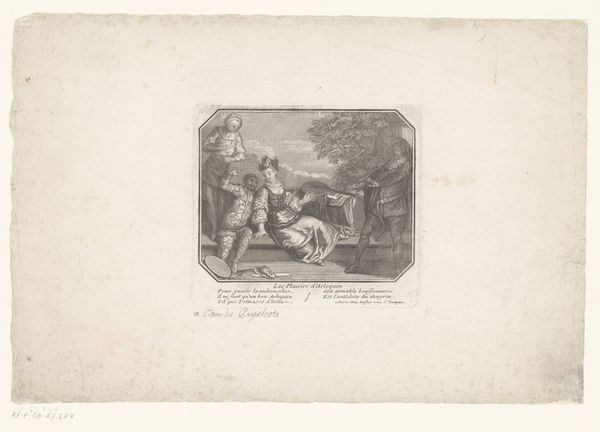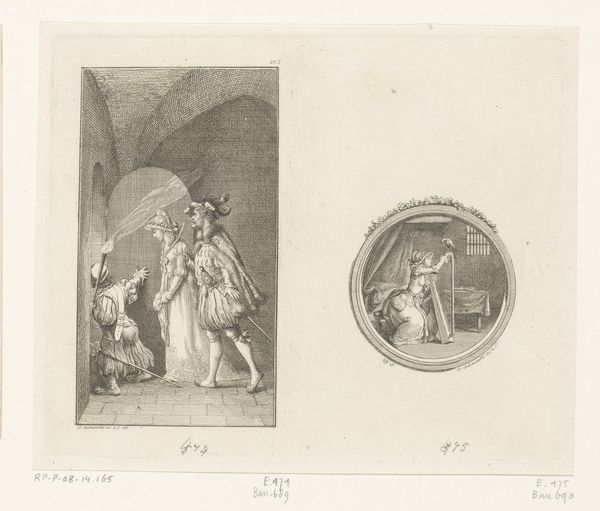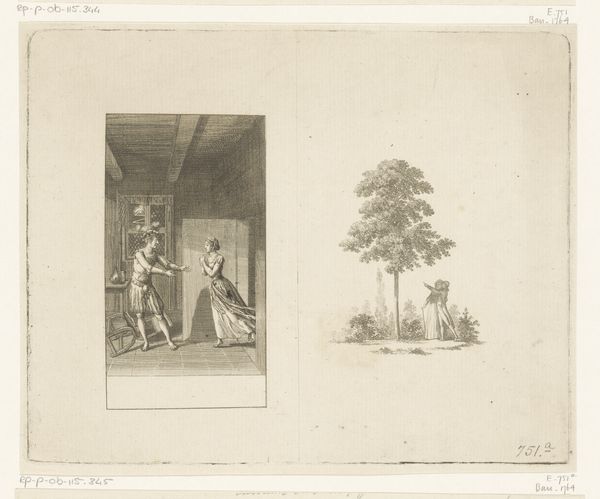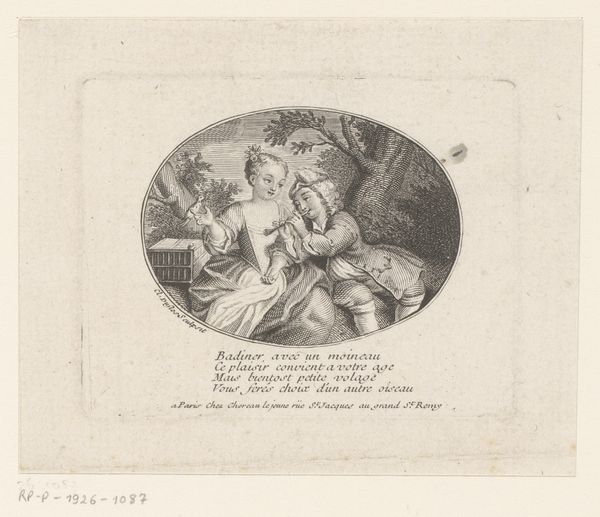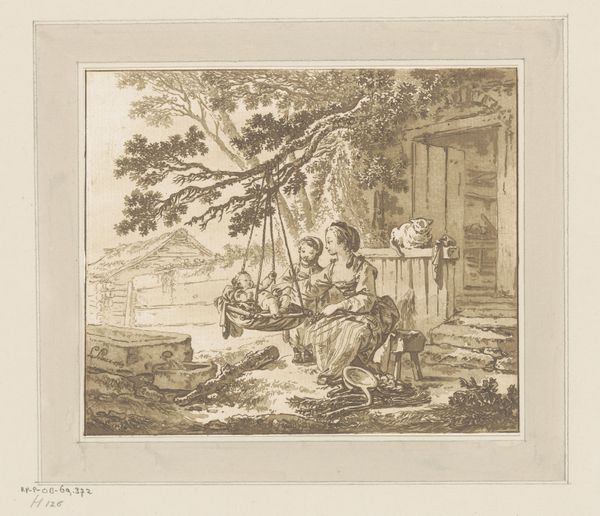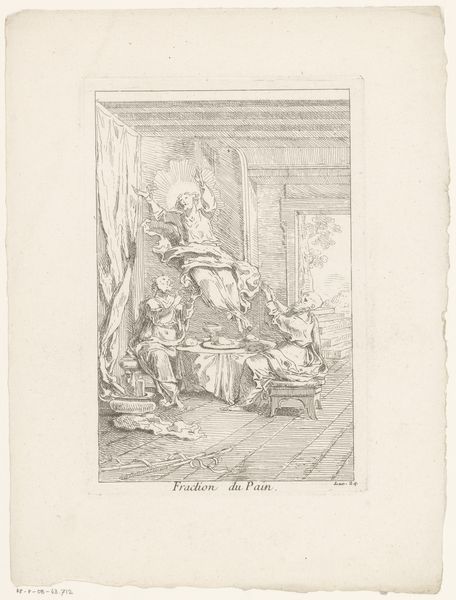
Berenice, wife of Antiochus Theos, and her son take refuge in Daphne 1790 - 1800
0:00
0:00
drawing, print, engraving
#
portrait
#
drawing
# print
#
old engraving style
#
romanticism
#
pen-ink sketch
#
history-painting
#
engraving
Dimensions: Sheet: 3 1/4 x 4 3/4 in. (8.3 x 12 cm)
Copyright: Public Domain
Curator: It strikes me as intensely intimate despite the historical subject matter. All those tiny, delicate lines create this incredibly fragile atmosphere, like a half-remembered dream. Editor: Indeed. What you're experiencing there is Burney's skillful execution of the romantic style in this print, whose full title is “Berenice, wife of Antiochus Theos, and her son take refuge in Daphne,” which dates from around 1790 to 1800. It depicts Berenice and her son seeking sanctuary, as the title suggests, and presently calls the Met in New York its home. Curator: Sanctuary feels like the perfect word here. Look at the way she clings to the child, that protective embrace, as if all the world's sorrows have settled on her shoulders. And that distant, almost ghostly cityscape – it’s all so evocative. Editor: Well, Berenice was indeed in a precarious position. Antiochus Theos, her husband, had been induced to restore his divorced wife Laodice to favour, which resulted in Berenice and her child's endangerment after Antiochus's death, according to historical accounts. The refuge becomes more than physical. The telescope adds an additional layer, inviting us to seek solace, perhaps even meaning, in the stars. Curator: The presence of a telescope next to what seems to be their sanctuary, however, feels slightly odd, especially considering Berenice was supposedly famed for sacrificing her hair. Is it meant to represent more than just earthly refuge? Editor: That's where it gets fascinating, isn't it? This symbol could hint at aspiration beyond earthly difficulties, as the narrative may point towards divine protection during her flight. Remember, the story is filtered through Burney's own time, shaped by his perspective on power, family, and resilience, with an implicit reference to the myth of Daphne. It prompts reflection on how we mythologize history to address present needs, with the figure of Berenice as a point of connection. Curator: So, the cultural memory and artistic interpretation begin a dance of their own. That’s the wonder of historical narrative in art – the convergence of then and now. Editor: Precisely. Each viewing brings a new facet to light, offering timeless insights into the human quest for solace. Curator: A small engraving with a big echo. Editor: A refuge indeed for thought and emotion.
Comments
No comments
Be the first to comment and join the conversation on the ultimate creative platform.
